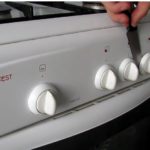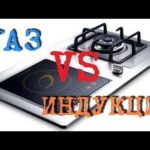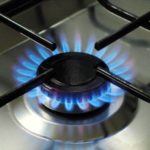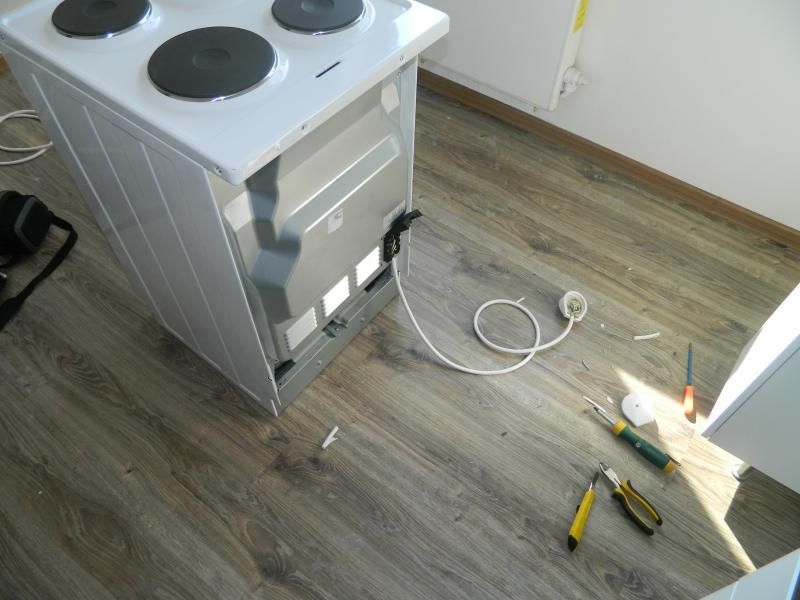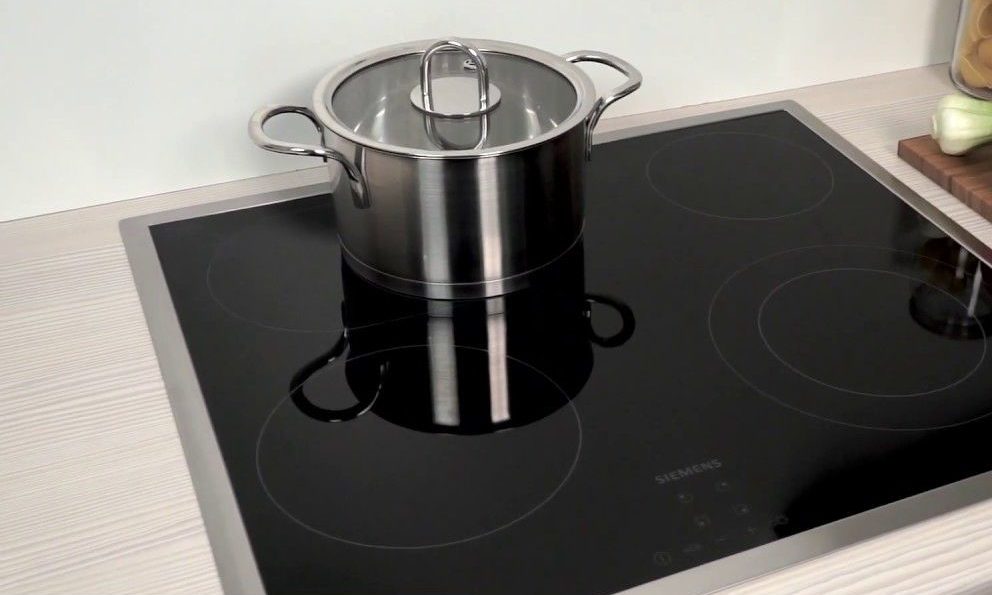Gas stove device
There are gas stoves in many apartments and private houses, even where natural gas is not supplied, they use cylinders. The popularity of the device is due to the simplicity and low cost of its operation. And although using the stove is not difficult, many often do not know its structure and principle of operation. This article is intended for those who are interested in these issues.
The content of the article
Gas stove device
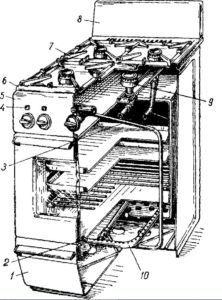 A modern device combines several systems that work in conjunction with each other. The slab combines the following systems:
A modern device combines several systems that work in conjunction with each other. The slab combines the following systems:
- basic, which includes parts directly related to the supply and combustion of gas: pipeline, shut-off valves, burners and burners;
- the electrical part, which allows you to use the device more comfortably, includes electric ignition, lighting, and, in some models, power supply to the grill;
- frame, usually made of stainless steel and coated with heat-resistant and impact-resistant enamel.
Gas burner device
 A burner and a hotplate are two different things, although many people often confuse them out of ignorance. The burner is located in the stove, under the hob, while the burners are located in the upper part. When washing, they are removed and wiped, trying to prevent moisture from getting inside the dividers. Under the burner there is a burner body with a nozzle.From it, the gas enters the divider, where it is mixed with air. The regulator controls the gas supply from the burner - from the weakest (extreme left position) to the maximum (extreme right position of the regulator).
A burner and a hotplate are two different things, although many people often confuse them out of ignorance. The burner is located in the stove, under the hob, while the burners are located in the upper part. When washing, they are removed and wiped, trying to prevent moisture from getting inside the dividers. Under the burner there is a burner body with a nozzle.From it, the gas enters the divider, where it is mixed with air. The regulator controls the gas supply from the burner - from the weakest (extreme left position) to the maximum (extreme right position of the regulator).
Depending on whether natural or bottled gas is used, replaceable sets of nozzles are installed on the burners. It is not recommended to change the jets or adjust the pressure yourself; it is better to entrust this matter to a specialist.
Three types of burners are used:
- kinetic;
- diffusion;
- mixed.
The names come from the principle of operation: in diffusion burners, gas naturally mixes with air after passing through the socket of the divider. This is the option used in the oven. With diffusion-type burners, the gas enters under pressure, due to which air is sucked in, and the ready-made mixture enters the burner. Modern gas stoves are equipped with mixed-type burners, in which part of the air comes from inside the stove, and part of it enters the burner from the kitchen area.
Gascontrol
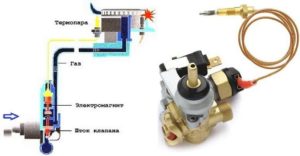 The combustion process is controlled by a thermocouple that shuts off the gas if one of the burners goes out. For the Gascontrol system to operate, it is not necessary to have a power supply; it operates independently of it.
The combustion process is controlled by a thermocouple that shuts off the gas if one of the burners goes out. For the Gascontrol system to operate, it is not necessary to have a power supply; it operates independently of it.
During operation, the thermocouple heats up; the damper, controlled by an electromagnetic valve, is in the open position. If the flame goes out as a result of water boiling away and splashing onto the burner, the cooled thermocouple stops acting on the valve and the damper closes.
Electric ignition
Often modern stoves are equipped with an electric ignition system. It includes spark plugs powered by electricity and located next to the burners. Power is supplied to them by pressing a button. If there is no voltage in the network, it doesn’t matter. Calmly open the gas supply valve to the burner and use good old matches.
Oven operation
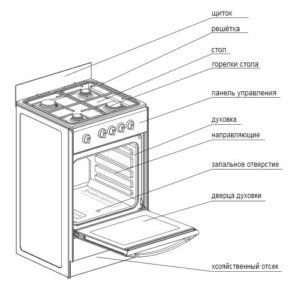 Modern ovens are equipped with a large-diameter circle-shaped burner and gas control. Oven options are often available with electric ignition, grill, convection system, three-layer glass for high-quality thermal insulation and other bells and whistles. Their operating principle is the same as in a simple old-style oven, with burners along the side walls - simultaneous heating of the food being prepared, located on baking sheets on racks, from several sides to ensure even baking.
Modern ovens are equipped with a large-diameter circle-shaped burner and gas control. Oven options are often available with electric ignition, grill, convection system, three-layer glass for high-quality thermal insulation and other bells and whistles. Their operating principle is the same as in a simple old-style oven, with burners along the side walls - simultaneous heating of the food being prepared, located on baking sheets on racks, from several sides to ensure even baking.
General principle of operation of a gas stove, diagram
The figure below shows a classic version of a gas stove, which reflects the above-described elements; it is not difficult to understand their interaction - everything is quite clear.

